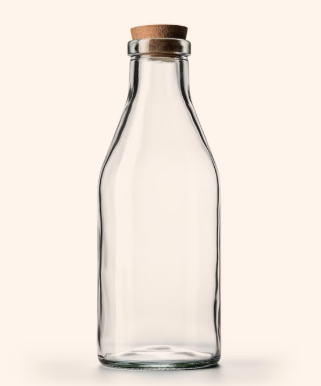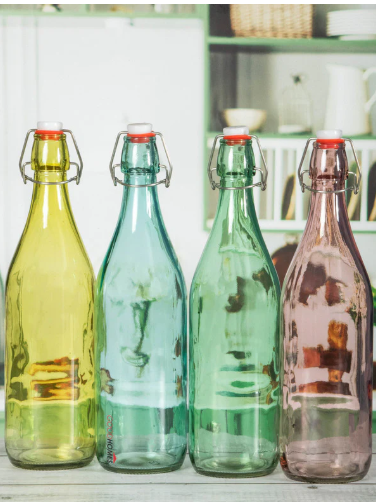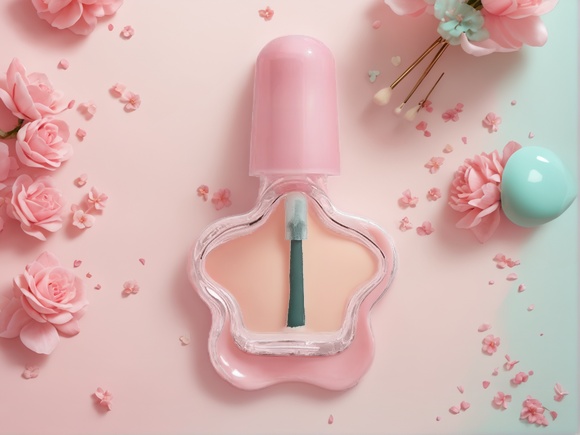Introduction
Glass bottles are everywhere—from the water we drink to the luxury perfume we wear. But have you ever stopped to consider what happens to all those bottles once they’re empty? In an age where sustainability is more than a buzzword, glass bottle recycling is taking center stage in the packaging industry. For procurement managers, brand founders, and distributors, understanding the nuances of glass recycling is not just about environmental responsibility—it’s about brand value, regulatory compliance, and future-proofing your supply chain.

In this comprehensive guide, we’ll explore ten essential facts about bottle glass recycling that will reshape how you think about packaging, production, and your brand’s role in the circular economy. As a leading OEM/ODM expert in essential oil and cosmetic packaging, PauPack Bottles is committed to driving the industry forward with sustainable solutions, flexible MOQs, and global export capabilities. Let’s dive into the fascinating world of glass recycling and discover why it’s more relevant than ever for B2B buyers and brands.
1.Glass Is Infinitely Recyclable Without Quality Loss
One of the most remarkable properties of glass is its infinite recyclability. Unlike plastics, which degrade in quality with each recycling cycle, glass can be melted down and reformed endlessly without losing its structural integrity or clarity. This unique characteristic makes glass a true champion of the circular economy.
When aglass bottleis recycled, it’s crushed into cullet (recycled glass fragments), which is then mixed with raw materials like sand, soda ash, and limestone. The inclusion of cullet not only preserves the quality of the final product but also reduces the need for virgin raw materials. This closed-loop system means that every recycledglass bottlecan become a new bottle, jar, or even a piece of art, again and again.
For B2B buyers, this translates into a packaging solution that aligns perfectly with sustainability goals and regulatory requirements. Brands that prioritize glass packaging can confidently communicate their environmental commitment, knowing that their containers are not contributing to landfill waste or resource depletion.
2. Using Recycled Glass (Cullet) Saves Energy and Reduces Emissions
The environmental benefits of glass recycling go far beyond landfill diversion. One of the most significant advantages is the energy savings achieved by using cullet in glass production. Cullet melts at a lower temperature than virgin raw materials, which means glass manufacturers can reduce furnace temperatures and, consequently, energy consumption.
For every 10% increase in cullet used in the manufacturing process, energy consumption drops by about 2-3%. This reduction translates directly into lower greenhouse gas emissions. In fact, recycling a singleglass bottlesaves enough energy to power a computer for 30 minutes or a 100-watt light bulb for four hours.
For brands and procurement managers, choosing suppliers that use high cullet content is a strategic move. It not only reduces the carbon footprint of your packaging but also supports your ESG (Environmental, Social, and Governance) goals. As more governments and retailers demand transparency in supply chains, energy-efficient glass production is becoming a key differentiator.
3.PauPack Bottles—Your Sustainable Glass Packaging Partner
At PauPack Bottles, we believe packaging is more than just a container—it’s an extension of your brand and a statement of your values. As a leading pcr bottle manufacturer and pcr bottle supplier, we are committed to integrating sustainability at every stage of our production process.
Our glass bottles and jars are crafted using high percentages of cullet, ensuring that every product you receive is both beautiful and environmentally responsible. We operate more than 20 automated production lines and maintain a library of over 30,000 molds, enabling us to offer unparalleled customization for essential oil, cosmetic, and food brands worldwide.
What sets PauPack apart?
-
Flexible MOQs: Whether you’re a boutique brand or a global distributor, we accommodate your order size and help you scale.
-
Customization: From logo printing to unique bottle shapes, our design team collaborates with you to create packaging that stands out.
-
Global Export: With a robust logistics network, we ensure your orders arrive on time—wherever your market is.
-
Quality Assurance: Our ISO, FDA, and SGS certifications guarantee that every batch meets international standards.
-
Sustainability: We use renewable energy, closed-loop water systems, and high cullet content to minimize our environmental impact.
By choosing PauPack Bottles as your pcr bottle oem, you’re not just sourcing packaging—you’re partnering with a company that shares your vision for a greener, more responsible future.
4: Recycling Glass Dramatically Reduces Pollution
Recycling glass is a powerful tool in the fight against pollution. When glass is recycled, air pollution is reduced by up to 20% and water pollution by up to 50%. This is because the production of new glass from raw materials releases more pollutants into the air and water than using recycled glass.
By diverting glass from landfills, we also prevent the leaching of chemicals and heavy metals into soil and groundwater. This not only protects local ecosystems but also ensures safer communities for future generations.
For brands operating in regulated markets, demonstrating a commitment to pollution reduction can enhance reputation, attract eco-conscious consumers, and open doors to green certifications and incentives.
5. Glass Recycling Reduces Landfill Waste and Conserves Space
Glass bottles can take centuries to decompose in landfills. By recycling glass, we significantly reduce the volume of waste that ends up in these sites, freeing up space for non-recyclable materials and reducing the environmental burden of waste management.
Landfill diversion is not just an environmental win—it’s an economic one. Municipalities and waste management companies save on landfill costs, and brands can tout their landfill reduction achievements in sustainability reports and marketing materials.
For B2B buyers, sourcing from manufacturers who prioritize recycling supports your own waste reduction goals and strengthens your sustainability narrative.

6.Glass Recycling Extends the Life of Manufacturing Equipment
The benefits of glass recycling aren’t limited to environmental impact—they also extend to the manufacturing process itself. Cullet melts at a lower temperature than raw materials, which means less strain on furnaces and other equipment. This leads to reduced wear and tear, lower maintenance costs, and longer equipment lifespan.
For manufacturers, this translates into operational efficiencies and cost savings that can be passed on to clients. For brands and procurement managers, it means more reliable supply chains and stable pricing.
7.The Glass Recycling Process Is a Model of Circular Economy
The journey of a recycledglass bottleis a textbook example of circular economy in action. After collection and sorting, glass is cleaned, crushed into cullet, and melted with other raw materials. The resulting molten glass is shaped into new bottles, jars, or even fiberglass insulation.
This closed-loop process conserves resources, reduces emissions, and creates new products without the need for virgin materials. It’s a model that other industries aspire to replicate.
For brands, participating in this cycle is a powerful way to demonstrate environmental leadership and align with global sustainability movements.
8.Glass Recycling Programs Are Expanding Worldwide
From curbside collection to bottle banks and deposit return schemes, glass recycling programs are becoming more accessible and effective around the globe. Countries with well-established systems, like Germany and Sweden, boast recycling rates above 90%, while others are rapidly catching up.
These programs not only make recycling easier for consumers but also ensure a steady supply of high-quality cullet for manufacturers. For brands, participating in or supporting these initiatives can enhance corporate social responsibility and build goodwill with consumers.
9.Not All Glass Is Created Equal—And That Matters for Recycling
While container glass (used for bottles and jars) is highly recyclable, not all glass types can be recycled together. Decorative glass, window glass, and ceramics contain additives that can disrupt the recycling process. Proper sorting is crucial to maintaining the quality and integrity of recycled glass.
Manufacturers like PauPack Bottles invest in advanced sorting and quality control to ensure that only suitable glass is used in production. For B2B buyers, this means consistent quality and performance in every batch.
10.Glass Recycling Statistics Reveal Room for Growth
Despite its many advantages, global glass recycling rates still have room for improvement. In the United States, for example, only about 33% of glass food and beverage containers are recycled. In contrast, some European countries achieve rates above 70%.
This gap represents both a challenge and an opportunity. As regulations tighten and consumer awareness grows, brands that lead in glass recycling will stand out in the marketplace. By partnering with experienced suppliers like PauPack Bottles, you can ensure your packaging strategy is ahead of the curve.
Conclusion: Why Glass Recycling Matters for Your Brand and the Planet
Glass bottle recycling is more than an environmental initiative—it’s a strategic imperative for brands that want to lead in sustainability, compliance, and consumer trust. From energy savings and pollution reduction to operational efficiencies and brand differentiation, the benefits are clear and compelling.
At PauPack Bottles, we’re proud to be at the forefront of sustainable packaging innovation. As your trusted pcr bottle manufacturer, pcr bottle supplier, and pcr bottle oem, we offer not just products, but partnership—helping you navigate the evolving demands of the global market with confidence and creativity.
Ready to make your packaging part of the solution? Discover our custom glass packaging solutions and join us in building a cleaner, greener future—one bottle at a time.
| No. | Topic | Key Insight | Value for B2B Buyers |
|---|---|---|---|
| 1 | Glass is Infinitely Recyclable | Glass can be recycled endlessly without quality degradation, unlike plastic. | Enables sustainable packaging and supports brand positioning in eco-conscious markets. |
| 2 | Recycled Glass Saves Energy | Using 10% more cullet reduces energy consumption by 2–3% and cuts emissions. | Lowers carbon footprint and supports ESG and compliance objectives. |
| 3 | PauPack Bottles: Sustainable OEM Partner | High cullet usage, 20+ automated lines, 30,000+ molds, global logistics. | Flexible MOQs, customization, fast delivery—built around sustainability. |
| 4 | Reduces Air and Water Pollution | Recycling glass reduces air pollution by 20% and water pollution by 50%. | Enhances brand reputation and enables access to green certifications. |
| 5 | Cuts Down on Landfill Waste | Glass takes centuries to degrade—recycling reduces landfill volume. | Supports zero-waste goals and adds credibility to sustainability reports. |
| 6 | Extends Equipment Lifespan | Lower melting point of cullet reduces furnace wear and maintenance. | Leads to cost efficiencies and supply chain stability. |
| 7 | Model of Circular Economy | Glass recycling is a closed-loop system: collect → melt → reshape → reuse. | Aligns brand with circular economy principles and global green movements. |
| 8 | Global Recycling Programs Growing | Many countries now have >90% recycling rates thanks to collection systems. | Brands can benefit from CSR participation and improved public perception. |
| 9 | Not All Glass is Recyclable Together | Container glass is recyclable, but ceramics or window glass can disrupt the process. | PauPack ensures high-quality sorting for consistent product integrity. |
| 10 | Global Recycling Rates Need Improvement | U.S. recycles ~33%; top EU countries exceed 70%. | Early adopters gain competitive advantage as regulation tightens and awareness grows. |











